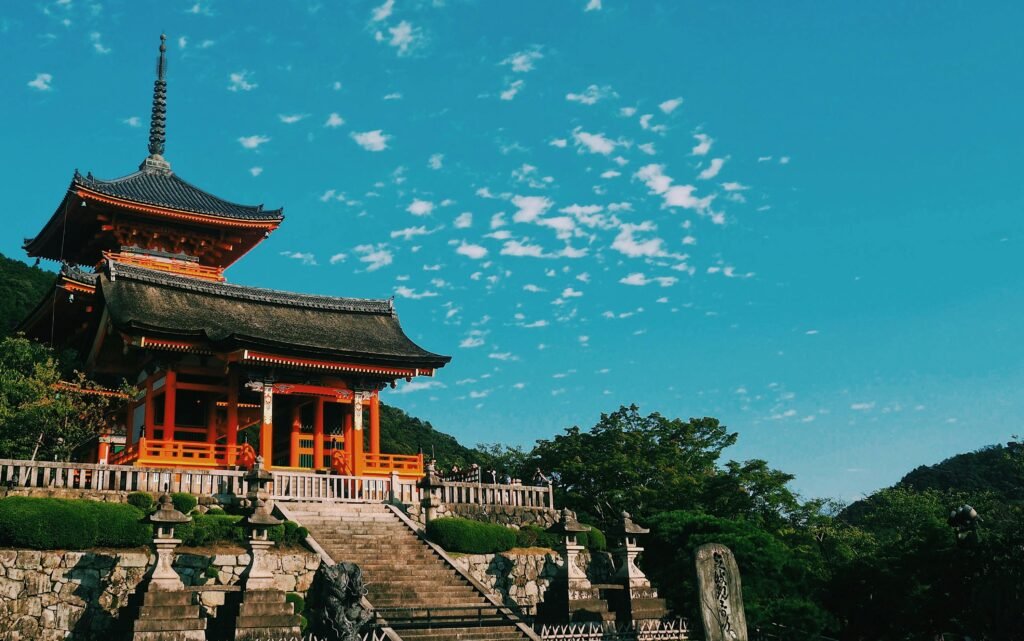Where ancient traditions meet serene landscapes and refined simplicity

Nestled in the Kansai region, Kyoto stands as a living museum of Japan’s imperial past. Once the capital for over a millennium, the city invites travelers into a world of wooden temples, Zen gardens, and timeless streets steeped in culture and calm.
A City of Timeless Beauty
Kyoto isn’t just a destination—it’s an immersive experience. From the delicate fragrance of cherry blossoms in spring to the rustling bamboo groves of Arashiyama, every season in Kyoto tells its own poetic story.
Whether you’re exploring centuries-old shrines or enjoying a quiet tea ceremony, Kyoto’s rhythm is one of grace, mindfulness, and beauty.
Highlights Not to Miss
▪ Fushimi Inari Shrine
Famed for its iconic red torii gates that weave through forested trails, this shrine honors Inari, the god of rice and prosperity. Walking the paths offers not only spiritual energy but also a visual journey through one of Japan’s most photographed sites.
▪ Kinkaku-ji (Golden Pavilion)
A Zen temple wrapped in shimmering gold leaf and perfectly mirrored in a tranquil pond. Surrounded by traditional gardens, it represents harmony, purity, and the deep aesthetic values of Japanese culture.
▪ Kiyomizu-dera Temple
Built on a hillside without a single nail, this wooden temple provides sweeping views of Kyoto. Its sacred waterfall and ornate halls make it one of the most revered religious sites in the country.
▪ Gion District
Step into old-world Japan in Gion, where traditional wooden houses line narrow lanes. In the evenings, geisha and apprentice maiko move gracefully between appointments, keeping Kyoto’s performing arts heritage alive.
▪ Arashiyama Bamboo Grove
A gentle walk through this towering bamboo forest feels almost otherworldly. The natural light and swaying stalks create a dreamlike atmosphere that calms the mind and stirs the soul.
A Culinary Heritage
Kyoto is the birthplace of kaiseki—Japan’s refined multi-course cuisine rooted in seasonality and aesthetics. Enjoy dishes crafted with artistic detail, often served in intimate ryotei (traditional restaurants). Don’t miss the fresh flavors of matcha-based sweets, yuba (tofu skin), and grilled river fish.
For a more casual bite, Nishiki Market offers an array of local delicacies, from skewered seafood to mochi stuffed with unique fillings, giving you a taste of everyday Kyoto.
Where to Stay
- Traditional Ryokan: Sleep on tatami mats, bathe in hot spring baths, and dine in-room wearing a yukata. Ryokan stays offer not just accommodation, but cultural immersion.
- Modern Comforts: For those who prefer luxury with a view, Kyoto hosts top-tier hotels blending Japanese minimalism with international service standards.
When to Visit
- Spring (March–April): Sakura (cherry blossoms) blanket parks, temples, and riversides in pink and white—perfect for photography and festivals.
- Autumn (October–November): Maple leaves turn crimson and gold, transforming gardens and temple grounds into living paintings.
- Winter & Summer: Less crowded, offering more personal and tranquil experiences, especially for spiritual retreats and cultural exploration.
Traveler’s Essentials
- Getting Around: Kyoto’s bus and subway systems are efficient. Prepaid travel cards make moving around seamless.
- Cultural Etiquette: Politeness is key. Bow slightly when greeting, and always remove shoes before entering traditional inns or certain temples.
- Language Barrier: While many signs are bilingual, a few Japanese phrases or a translation app can enhance your experience.
🎌 Why Kyoto?
Kyoto is not a city you simply visit—it’s one you feel. With its soft-spoken elegance, deep spirituality, and preservation of ancient ways, Kyoto doesn’t shout for your attention. It whispers. And that whisper stays with you long after you leave.


